#Android RecyclerView ScrollView
Explore tagged Tumblr posts
Text
Nested scrollview with RecyclerView in Android Application
Nested scrollview with RecyclerView in Android Application

n this tutorial I will explain how we can add Nested ScrollView in Android Application. This post helps you to understand how simple it is to implement scroll if you are using multiple recycler view in a single screen. For example, if we want to implement Image Slider in top of the screen and after slider, we want to implement RecyclerView then we implement both inside nested scroll view as shown…
View On WordPress
0 notes
Text
How do you use SeekBar?
The SeekBar is a highly customized text input device on Android which allows users to input certain information by scrolling vertically up or down. It also permits the user to scroll up and down to alter the values in the SeekBar. In this post, we'll go over everything you have to know about SeekBar and how to create your own. This is going to be a detailed blog with a lot of code, but we'll be sure to break it down so you can build your personal SeekBar.
The Best Python Books for Beginners in 2022
1. What is a SeekBar?
An SeekBar is a control that displays a status indicator, usually a bar that indicates the percent of a task which has been completed. A SeekBar can be found in the form of a ScrollView or RecyclerView however, it may also be placed in other places. The bar's position is controlled through the progress property which is typically either 0% or percent to signal the beginning or end of the task.
CCNA LAB Configuration Course Zero To Hero
2. How do you create an SeekBar
The SeekBar is an extremely useful feature for your application. It allows you to design an progress bar, a progression slider, or a slide show. It's also a great idea to make use of the SeekBar whenever you need the user to look up something. A SeekBar is a graphical control that allows the user to input the search query and discover the result. The SeekBar is a good choice for the use of a progress bar, progress slider, or a slide show.
How To Configure OSPF Multi Area On 4 Routers In Cisco Packet Tracer
3. How to customize the appearance of SeekBar
SeekBar is a component of Android. SeekBar can be described as an Android Component that displays the progression of a SeekBar Item. It can be personalized with a variety options, in order to offer a superior user experience. The SeekBar has an underlying color, and can be styled with a custom color. It can be customized using a custom Image, Text or an Icon. It is customizable using the use of a custom ProgressionDrawable. It can be customized with the use of a custom TextAppearance. It is customizable using a custom ProgressDrawable. It can be personalized with an original Image, a custom TextAppearance along with a custom progressDrawable and a custom TextAppearance. It can be personalized with the use of a custom Image and a customized TextAppearance along with a custom progressDrawable and the ability to create a custom TextAppearance. It can be customized with a custom Image or a custom TextAppearance and a custom ProgressDrawable and a custom TextAppearance. It is customizable with the creation of a custom Image as well as a custom TextAppearance and a custom ProgressDrawable and a customized TextAppearance and a custom Icon. It can be customized with the use of a custom Image or a custom TextAppearance with a custom-designed ProgressDrawable, a custom TextAppearance and a custom Icon.
Basic Cisco Router Configuration | Cisco Packet Tracer Tutorial
4. Conclusion.
The article we have examined the SeekBar widget and its numerous characteristics. We have also explained how to incorporate the widget on both Android and iOS applications. This widget is perfect to use in applications that need to allow users to search, browse, or navigate. SeekBar is a versatile widget that can be used in various ways and is a great option for applications that require users to search, browse or navigate.
Static Routing Configuration In Cisco Packet Tracer
0 notes
Text
kotlin android 개발 날씨앱 만들기 과정 요약
original source : https://www.youtube.com/playlist?list=PLEPZdzLLJH94Jk_Jz-cTUXYFoObPBH7KB
시애틀에 있는 수염난 안경낀 백인 청년 설명
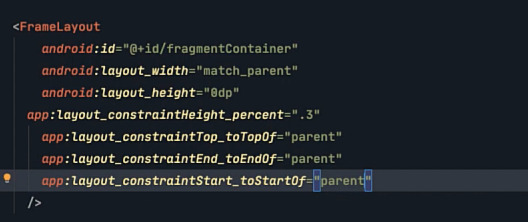
.

.

.
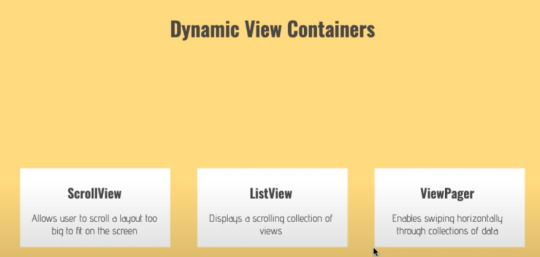
.
data binding을 위해서 gradle에서 해야할 작업
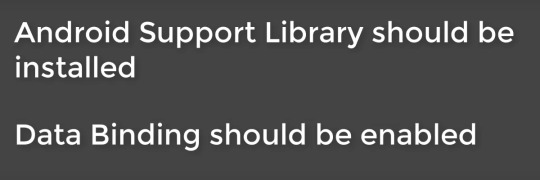
.
data binding의 장점
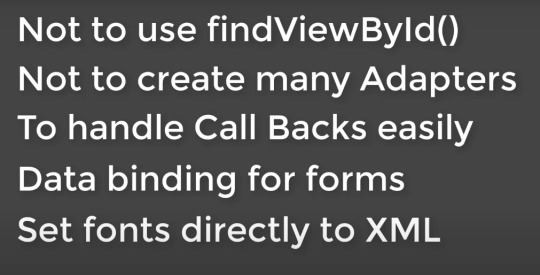
.

.
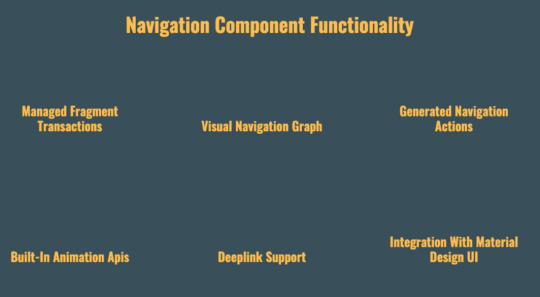
.
3rd party image loading library들 이 강의에서는 coil을 사용

.
toolbar를 app bar로 사용하면서 navigation component를 사용하는 경우

.
tool bar를 app bar로 사용하는 경우 약간의 material 느낌을 주기위해 AppBarLayout를 이용한 경우

.
coil를 사용해 image loading한경우

.
json converting을 위해 moshi를 사용한 경우
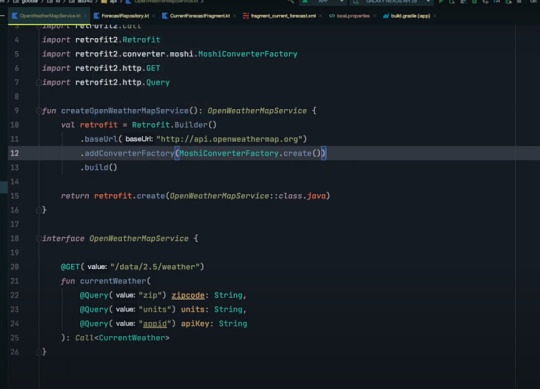
.
retrofit

.
.
.
민감한 data를 외부에 놓고 사용하는 방법
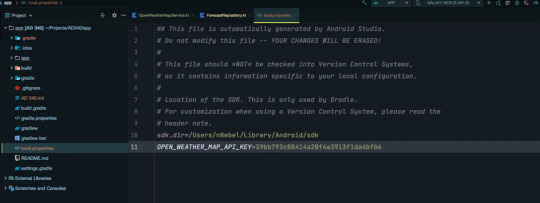
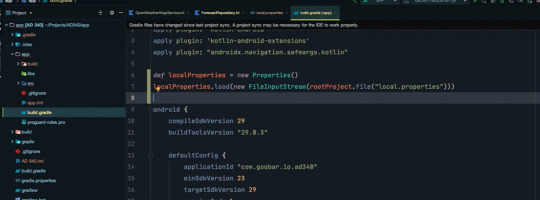

.
.
.
외부에서 전달되는 json data의 키와는 다른 field명을 쓰고 싶을때
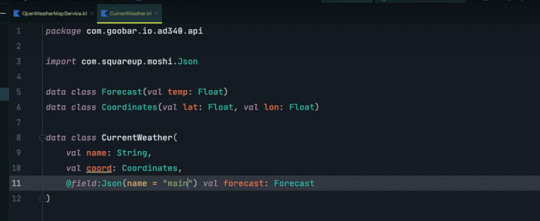
.
외부와 data 통신시에 보안을 위해 usesCleartextTraffic을 사용한다.

.
.
.
.
1강
0:01 - Week 0 Review
1:22 - Syllabus Review
2:40 - Class Announcements
6:14 - Why Learn App Development?
9:26 - Challenges of App Development
15:34 - Types of Mobile Development
22:36 - Why Android Development?
27:42 - Setting Up Our Android Development Environment
28:34 - Installing Android Studio
36:12 - Creating Your First Android Studio Project
39:17 - Creating An Android Emulator
41:52 - Installing Your First Android App
45:14 - Sharing An Android Studio Project to GitHub
50:06 - Building An Android APK
- What are the unique benefits and challenges of Android app development?
- What are some different ways of building mobile apps?
- What makes Android the most popular mobile operating system?
- What is Android Studio?
- What is the Android Emulator?
- What is Kotlin?
- How do you create a new Android project?
- How do you share code from Android Studio to GitHub?
- How do you add a README to your GitHub repo?
.
.
.
.
2강
0:36 - Outline
1:57 - Android Framework Components
14:07 - What is generated when you create a new Android Studio project?
40:26 - Working with Android Activities
41:20 - Android Activity lifecycle
50:12 - Using the Android Studio debugger // How to set a breakpoint in Android Studio?
59:38 - Creating Interactive User Interfaces
1:01:46 - What is FrameLayout?
1:05:09 - What is LinearLayout?
1:08:34 - What is RelativeLayout?
1:14:22 - What is ConstraintLayout?
1:28:09 - Responding To User Interaction
1:29:00 - ConstraintLayout simple tutorial
1:29:37 - How to create a new Vector Asset in Android Studio?
1:38:46 - How to respond to a Button click in Android
1:40:04 - Android Button setOnClickHandler
1:45:40 - Receiving user input using an EditText
1:54:00 - Customize Material Design theme in Android Studio
- What are the Android app components?
- What is an Android Activity?
- What is generated when we create a new Android Studio project?
- What is the Android Activity lifecycle?
- What is the difference between an Android ViewGroup and a View?
- What is a FrameLayout? LinearLayout? Relative Layout? ConstraintLayout?
- How to build a simple UI using ConstraintLayout?
- How do define an Android click listener?
- How to show a Toast message in an Android Activity?
- How to enable Android developer options?
- How to use an EditText to receive user input?
.
.
.
.
3강
- How to display dynamic content in an app?
- How to display large collections of data?
- How to architect your app to provide data to your Activity?
- What is MVVM?
- What is LiveData?
- How to model data with Kotlin data classes?
- How to create a RecyclerView Adapter?
- How to bind data using a RecyclerView ViewHolder?
- How to define an onClickHandler for your RecyclerView?
- How to format String resources?
.
0:25 - Outline
2:17 - Project Demo
3:56 - Displaying Dynamic Data
5:05 - Dynamic view containers // ScrollView, ListView, ViewPager
6:57 - RecyclerView
7:50 - Why RecyclerView?
16:47 - Defining A Data Model
20:00 - Modeling data with Kotlin data classes
24:25 - What is LiveData?
28:08 - Implementing A RecyclerView
29:23 - Creating a data class to model daily weather forecasts
31:50 - Creating a data repository
32:04 - Using LiveData to expose data from a repository
49:54 - Adding a RecyclerView to your layout xml file
52:37 - How to use Logcat to understand why your app crashed
54:58 - Add RecyclerView dependency to your build.gradle file
57:52 - How to add margin to your RecyclerView using ConstraintLayout design view?
1:01:57 - How to implement a RecyclerView Adapter using Kotlin?
1:30:38 - Add touch feedback to RecyclerView list items
1:40:00 - How to format String resources?
.
.
.
.
4강
- How to create a new Android Activity?
- How to use an Intent to open a new Activity when a button is clicked?
- How to display an options Menu
- How to respond to a Menu item click?
- How to display an AlertDialog?
- How to save a value using SharedPreferences?
.
.
.
.
5강
- How to create a new Fragment
- How to migrate UI/logic from an Activity to a Fragment
- How to communicate between a Fragment and an Activity
- How to add a FloatingActionButton to your UI
.
.
.
.
6강
- What is the Android Navigation Architecture Component?
- What problems is it trying to solve?
- How to create a navigation graph?
- How to add new destinations and actions to your navigation graph?
- How to navigate to a new Fragment using the NavController?
- How to update your AppBar based on navigation changes?
- How to implement a BottomNavigationView?
.
.
.
.
7강
- How to load data from a remote api using Retrofit; an HTTP client library for Android/JVM?
- How to listen to changes in SharedPreferences values?
- How to load and display remote images using the Coil image loading library
.
.
.
.
0 notes
Text
SelfAdjointView
SelfAdjointView is an Android library that allows developers to easily let view change with the parent which can scroll. The animation contains one or more of parallax, alpha, scale.
Apply to
ScrollView/HorizontalScrollView
ListView/GridView
RecyclerView
ViewPager
sth else that can scroll
from The Android Arsenal http://ift.tt/2vwc8jk
0 notes